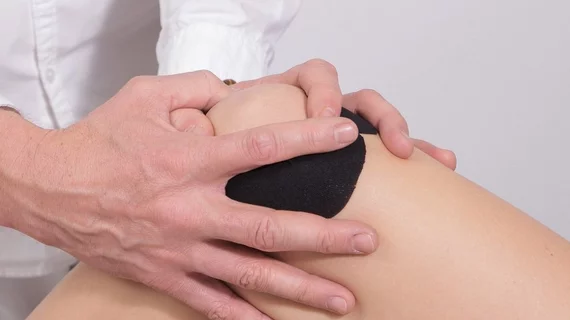Novel CT technique assesses bone marrow in knee joint injuries
A new CT quantitative analysis method can accurately assess bone marrow fluid buildup in knee joint injuries, according to research published July 24 in Clinical Radiology.
The method—dual-energy CT virtual non-calcium (VNCa) imaging—can remove calcium from CT data and produce a quantitative assessment of injuries in the largest and most complex joint in the human body, according to M.-Y. Wang, with The First Affiliated Hospital of Nanjing Medical University in China, and colleagues.
“The findings of the present study showed that bone marrow oedema could be diagnosed on dual-energy CT color-coded images with a high sensitivity, specificity, and accuracy when compared with MRI,” the researchers wrote.
Bone marrow oedema is connected with many disease states, the authors noted, including trauma, infections and degenerative arthritis. Early diagnosis could help patients make proper life changes to prevent further injury. MRI is often used to identify oedema, but dual-energy CT offers shorter scan times and potentially improved visualization.
Wang et al. enrolled 35 patients in the study, all of whom had knee joint injuries and underwent both dual-energy CT and MRI between March and November 2018. Two independent radiologists assessed bone marrow oedema on color-coded dual-energy CT VNCa images, while another reader measured the biggest area of bone marrow oedema using the CT and MRI scans.
Overall, the VNCa images produced a sensitivity of 88.4%, specificity of 98%, positive predictive value of 92.7%, negative predictive value of 96.8% and accuracy of 95.9%. Additionally, ROC curve analysis resulted in an area under the curve (AUC) of 0.910.
“Dual-energy CT can serve as an alternative option for patients with contraindications to MRI,” the authors wrote.

